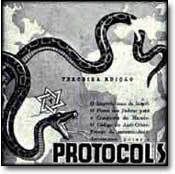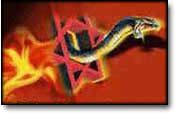An Israeli attack on the Iranian capital of Tehran using five
500-kiloton weapons would kill seven million people -- 86% of the
population -- according to a new study.
Monday 13 May 2013
Unimaginable Destruction If Israel Did Attack Iran with Nuclear Weapons
In those first minutes, they’ll be stunned. Eyes fixed in a
thousand-yard stare, nerve endings numbed. They’ll just stand there.
Soon, you’ll notice that they are holding their arms out at a 45-degree
angle. Your eyes will be drawn to their hands and you’ll think you mind
is playing tricks. But it won’t be. Their fingers will start to
resemble stalactites, seeming to melt toward the ground. And it won’t
be long until the screaming begins. Shrieking. Moaning. Tens of
thousands of victims at once. They’ll be standing amid a sea of
shattered concrete and glass, a wasteland punctuated by the shells of
buildings, orphaned walls, stairways leading nowhere.
This could be Tehran, or what’s left of it, just after an Israeli nuclear strike.
Iranian
cities -- owing to geography, climate, building construction, and
population densities -- are particularly vulnerable to nuclear attack,
according to a new study,
“Nuclear War Between Israel and Iran: Lethality Beyond the Pale,”
published in the journal Conflict & Health by researchers from the
University of Georgia and Harvard University. It is the first publicly
released scientific assessment of what a nuclear attack in the Middle
East might actually mean for people in the region.
Its
scenarios are staggering. An Israeli attack on the Iranian capital of
Tehran using five 500-kiloton weapons would, the study estimates, kill
seven million people -- 86% of the population -- and leave close to
800,000 wounded. A strike with five 250-kiloton weapons would kill an
estimated 5.6 million and injure 1.6 million, according to predictions
made using an advanced software package designed to calculate mass
casualties from a nuclear detonation.
Estimates of the
civilian toll in other Iranian cities are even more horrendous. A
nuclear assault on the city of Arak, the site of a heavy water plant
central to Iran’s nuclear program, would potentially kill 93% of its
424,000 residents. Three 100-kiloton nuclear weapons hitting the
Persian Gulf port
of Bandar Abbas would slaughter an estimated 94% of its 468,000
citizens, leaving just 1% of the population uninjured. A multi-weapon
strike on Kermanshah, a Kurdish city with a population of 752,000, would result in an almost unfathomable 99.9% casualty rate.
Cham
Dallas, the director of the Institute for Health Management and Mass
Destruction Defense at the University of Georgia and lead author of the
study, says that the projections are the most catastrophic he’s seen in
more than 30 years
analyzing weapons of mass destruction and their potential effects.
“The fatality rates are the highest of any nuke simulation I’ve ever
done,” he told me by phone from the nuclear disaster zone in Fukushima,
Japan, where he was doing research. “It’s the perfect storm for high
fatality rates.”
Israel has never confirmed or denied possessing nuclear weapons, but is widely known to have up to several hundred
nuclear warheads in its arsenal. Iran has no nuclear weapons and its
leaders claim that its nuclear program is for peaceful civilian purposes
only. Published reports suggest
that American intelligence agencies and Israel’s intelligence service
are in agreement: Iran suspended its nuclear weapons development program
in 2003. More
Posted @
18:02
![]()
Subscribe to:
Post Comments (Atom)
![[9_10_s22.jpg]](http://3.bp.blogspot.com/_s5yaZ0Ye2Mo/R3slhl7bTtI/AAAAAAAAG4o/pXTUHusKJIg/s1600/9_10_s22.jpg)




No comments:
Post a Comment